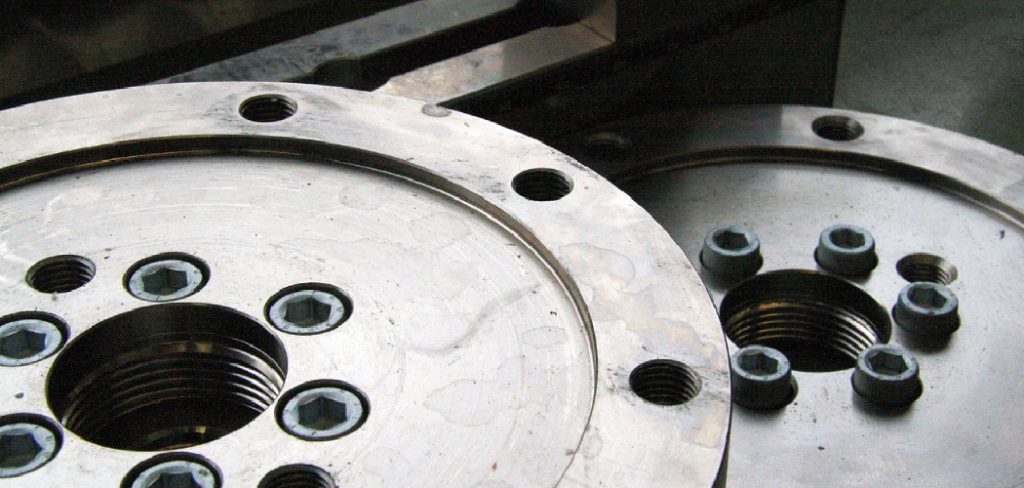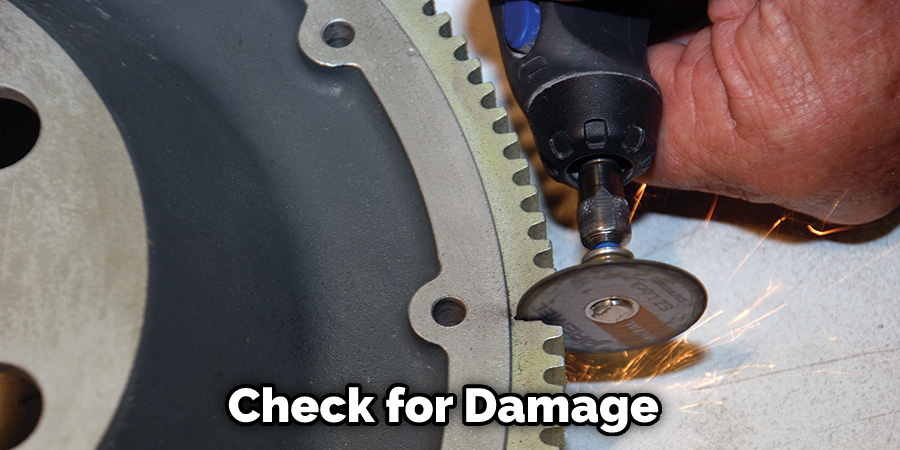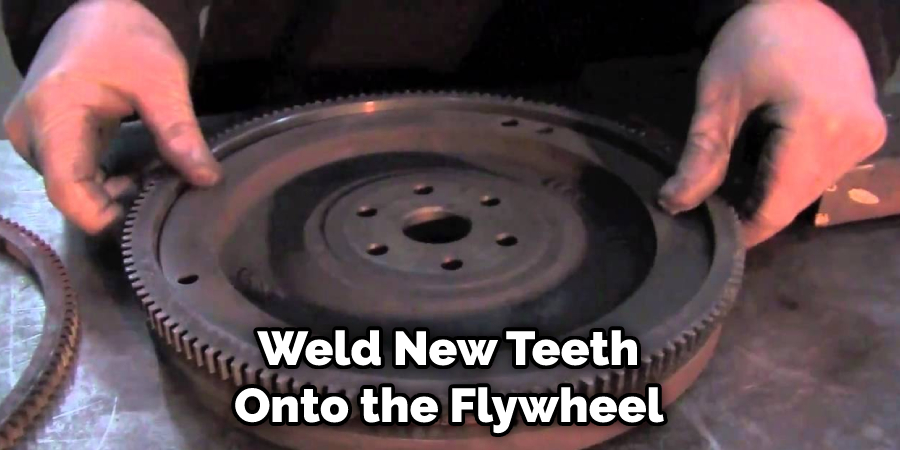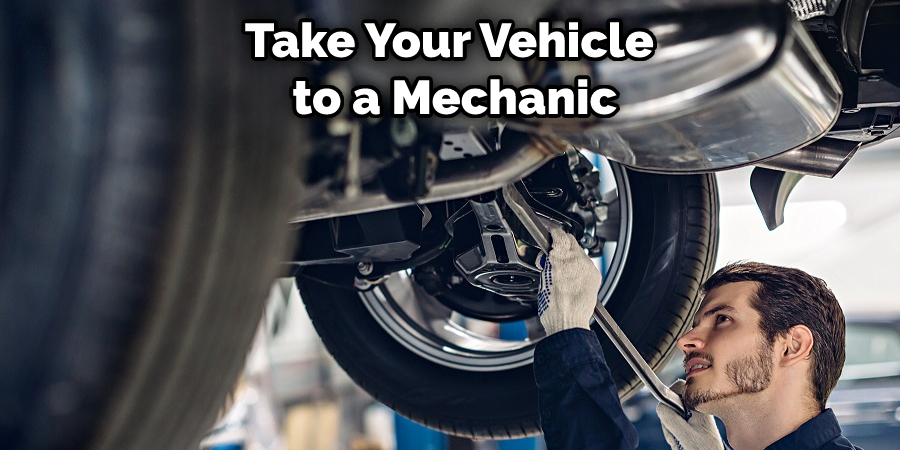It’s happened to all of us. You’re driving down the road, and suddenly your car starts shaking. You pull over to the side of the road and realize that your flywheel teeth have broken off. Don’t panic! With this guide, you can learn how to repair flywheel teeth quickly and easily.
Summary: Flywheel teeth can become damaged over time, causing the flywheel to no longer spin as easily. If left untreated, this can lead to increased wear on other parts of the engine and even a breakdown. There are several methods that can be used to repair flywheel teeth, each with its own benefits.

What Are Flywheel Teeth?
If you’ve ever seen a flywheel, you may have noticed that it has a series of teeth around the circumference. These teeth are known as flywheel teeth, and they play an important role in the operation of the flywheel. The teeth help keep the flywheel moving in a smooth, uniform motion, and they also help to transfer energy from the flywheel to the rest of the engine. Without these teeth, the flywheel would quickly lose its momentum and stop working.
Why It’s Important to Repair Flywheel Teeth?
A lawn is not only aesthetically pleasing, but it can also help to prevent soil erosion. However, most people don’t think about their flywheel, and even fewer know what it does. The flywheel is a weight attached to the crankshaft that helps keep the engine from vibrating. As the engine runs, the flywheel rotates.
The teeth on the flywheel can become damaged or worn down over time, which can cause vibration and affect the performance of the engine. Additionally, damaged flywheel teeth can cause the engine to misfire. If you notice any damage to your flywheel, it’s important to have it repaired as soon as possible.
A qualified mechanic can check for damage and make any necessary repairs. Don’t let damaged flywheel teeth jeopardize the performance of your engine – call a mechanic today!

How to Repair Flywheel Teeth Step by Step Guide
Step 1: Prepare the Flywheel
You’ll need to remove the flywheel from the engine if you’re going to try to repair the flywheel teeth yourself. This is usually a fairly straightforward process, but it’s a good idea to consult your engine’s manual for specific instructions. Once you’ve removed the flywheel, use a wire brush to clean off any debris or rust from the teeth.
Step 2: Assess the Damage
If the flywheel is prepared, you can see how much damage has been done. If a lot of teeth are damaged, it is better to replace the flywheel. But if only a few teeth are broken, you might be able to weld new ones onto the flywheel.
Step 4: Weld on New Teeth (if necessary)
If you’ve decided to weld new teeth onto the flywheel, use a welder designed for use with metal. Follow the instructions that come with the welder and wear all of the recommended safety gear. Once the new teeth are in place, allow the flywheel to cool completely before moving on to the next step.

Step 5: Reattach the Flywheel
Once the flywheel is cooled and repaired (or replaced), it’s time to reattach it to the engine. Again, consult your engine manual for specific instructions, but in most cases, you’ll need to line up the flywheel with the engine’s crankshaft and bolt it in place. With the flywheel back in place, your engine should be good as new.
Step 6: Test the Engine
Before you put your car back on the road, it’s important to test the engine to ensure that the repairs have been successful. First, start the engine and let it idle for a few minutes. If everything sounds normal, you should be good to go. However, if you notice any unusual noises or vibrations, it’s best to take the car to a qualified mechanic for further diagnosis.
Damaged flywheel teeth can cause the engine to misfire. If you notice any damage to your flywheel, it’s important to have it repaired as soon as possible.
Now that you know how to repair flywheel teeth, you can take care of any damage before it affects the performance of your engine. If you’re not comfortable doing the repairs yourself, take your car to a qualified mechanic. They’ll be able to assess the damage and make the necessary repairs to get your engine running like new again.

Some Consideration Things
The tools you will need to repair your flywheel teeth are a ratchet, a socket that fits the flywheel bolts, a new flywheel, a torque wrench, and some Loctite. The first step is to remove the old flywheel from your car. You will need to disconnect the battery, and then remove the starter. Once the starter is removed, you will be able to see the bolts holding the flywheel on. Use your ratchet and socket to remove these bolts. Be careful not to drop them, as they can be difficult to find if you do.
Safety first! Always make sure the engine is cool before starting any repairs. Wear gloves and eye protection when working on any engine.
Locating the problem is the first step in repairing your flywheel teeth. If you see damage to the teeth, you will need to replace the flywheel. If the damage is not too severe, you can try to repair the flywheel teeth.
Tips and Tricks
If your vehicle has a flywheel, keeping the teeth in good condition is important. If the teeth become damaged, it can cause problems with starting the engine or shifting gears. In some cases, damage to the flywheel teeth can even lead to engine failure.
There are a few different ways that you can repair damaged flywheel teeth. One option is to replace the flywheel entirely. This can be expensive, however, and it’s not always necessary. So instead, you can repair the damage by welding new metal onto the flywheel in many cases.
Another option is to use a flywheel tooth filler. This is a special type of epoxy that can fill in missing or damaged teeth. The filler will bond to the metal and create a new, strong surface.
If you have any damage to your flywheel teeth, it’s important to get it fixed as soon as possible. Ignoring the problem can lead to more serious damage, and it can even cause your engine to fail. If you’re not sure how to repair the damage, take your vehicle to a mechanic or auto body shop. They’ll be able to assess the damage and recommend the best course of action.

How Do You Know if A Flywheel Needs Replacing?
A flywheel is a heavy disc that helps to keep an engine running smoothly. Over time, however, the flywheel can become damaged or worn down, causing the engine to vibrate or shake. If you suspect that your flywheel may need to be replaced, there are a few signs to look for.
First, check for any cracks or chips on the surface of the flywheel. If there are any, the flywheel will likely need to be replaced. Second, listen to the sound of your engine. If you hear a loud knocking noise, it’s a good indication that the flywheel is damaged and needs to be replaced.
Finally, pay attention to how your car is driving. If the engine is vibrating excessively, the flywheel is likely the culprit. If you notice any of these signs, then it’s important to have the flywheel inspected by a professional as soon as possible. Keep reading for more information about how to repair flywheel teeth.
What Causes Teeth to Break Off Flywheel?
When driving your car, you expect all the parts to work together smoothly. But sometimes, things can go wrong. For example, if your engine is revving too high, it can cause your flywheel to break off. What causes this to happen? Essentially, the centrifugal force from the high-revving engine becomes too much for the flywheel to handle.
The result is a broken flywheel and a damaged engine. In order to avoid this problem, it is important to keep your engine revs in check. If you notice that your engine is revving too high, pull over and turn off the engine immediately. By doing so, you can avoid serious damage to your vehicle.
How Do You Resurface a Flywheel?
Resurfacing a flywheel is not a job for the faint of heart. It is a dirty, messy job that takes time, patience, and a steady hand. But, if you are up for the challenge, it is a relatively simple process. First, you will need to remove the flywheel from the engine.
Next, use a sanding block to remove any roughness from the surface of the flywheel. Once the smooth surface, use a file to remove any burrs or irregularities. Finally, use a coarse abrasive to resurface the flywheel. And that’s it! Just follow all safety precautions and take your time – rushing this job could result in serious injury.
Frequently Asked Question
Can Flywheel Be Repaired?
Yes, a flywheel can be repaired. First, the flywheel must be removed from the engine. Once it is removed, the teeth can be inspected for damage. If any damage is found, it must be repaired before the flywheel can be re-installed.
Why Are Flywheels so Expensive?
Flywheels are so expensive because they are a crucial component of the car’s engine. They help keep the engine running smoothly by keeping the crankshaft in place. Without a flywheel, the engine would not be able to function properly.
Can a Flywheel Be Resurfaced?
Yes, a flywheel can be resurfaced. The procedure includes removing the damaged area of the flywheel and then welding a new piece of metal to the old surface. Finally, the entire flywheel is ground down until it is smooth again.
How Much Does It Cost to Fix a Flywheel?
Assuming you need to replace the flywheel, it will cost between $300 and $400 to have a professional do it. However, if you are comfortable doing it yourself, you can find a replacement flywheel online for around $100. You will also need some new tools, which you can rent from most auto parts stores.
Conclusion
As you can see, repairing flywheel teeth is not as daunting as it may seem. By following the steps we outlined and being patient, you should be able to get the job done without any problems. Thanks for reading our post about how to repair flywheel teeth. Have you ever repaired flywheel teeth before? What tips would you add?
